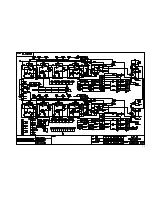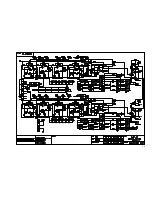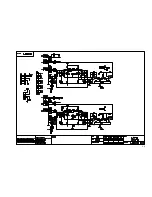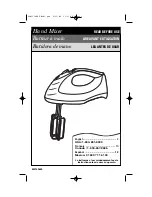
1 - 21
6 - INSERT POINT
The unbalanced, pre-EQ insert point is a break in the channel signal path, allowing
limiters, compressors, special EQ or other signal processing units to be added in the
signal path. The Insert is a 3-pole A gauge jack socket which is normally bypassed.
When a jack is inserted, the signal path is broken, just before the EQ section. The Send
may be tapped off as an alternative pre-fade, pre-EQ direct output if required, using a
lead with tip and ring shorted together so that the signal path is not interrupted.
7 - DIRECT OUTPUT
Channels 1-8/1-16/1-24 (see block diagram) have a dedicated Direct Output which
allows direct connection to external devices, for example to feed Tape Machines or
effects units.
The pre-fade direct output level may be monitored by pressing the PFL switch on the
appropriate channel to feed the pre-fade signal to the monitors and the bargraph
meters.
8 - DIR. PRE
The Direct Outputs are normally set POST-FADER for use as effects sends or to provide
fader control of recording levels in a studio recording application. For live recording the
outputs can be individually changed to PRE-FADER by pressing this switch, so that the
direct output level remains unaffected by fader settings for the main PA mix.
9 - EQUALISER
The Equaliser (EQ) allows fine manipulation of the frequency bands, and is particularly
useful for improving the sound in live PA applications where the original signal is often
far from ideal and where slight boosting or cutting of particular voice frequencies can
really make a difference to clarity.
4 - GAIN
This knob sets how much of the source signal is sent to the rest of the mixer. Too high,
and the signal will distort as it overloads the channel. Too low, and the level of any
background hiss will be more noticeable and you may not be able to get enough signal
level to the output of the mixer.
See `Setting Up & Troubleshooting on page 20 to learn how to set GAIN correctly.
5 - 100Hz HI-PASS FILTER
Pressing this switch activates a steep 18dB per octave filter which reduces the level of
bass frequencies only. Use this in live PA situations to clean up the mix, reducing stage
rumble or popping from microphones.
Summary of Contents for LX7-2
Page 1: ...i T T T T Technical Manual echnical Manual echnical Manual echnical Manual echnical Manual ...
Page 5: ...1 1 INTRODUCTION ...
Page 8: ...1 4 ...
Page 18: ...1 14 Audio Connector Pinouts ...
Page 19: ...1 15 Dimensions ...
Page 20: ...1 16 BLOCK DIAGRAM ...
Page 21: ...1 17 ...
Page 22: ...1 18 USING THE CONSOLE ...
Page 23: ...1 19 Overview A 16 channel frame is shown ...
Page 34: ...2 2 ...
Page 35: ...2 3 ...
Page 36: ...2 4 ...
Page 37: ...2 5 ...
Page 38: ...2 6 ...
Page 39: ...2 7 ...
Page 40: ...2 8 ...
Page 41: ...2 9 ...
Page 42: ...2 10 ...
Page 43: ...2 11 ...
Page 44: ...2 12 ...
Page 45: ...2 13 ...
Page 46: ...2 14 ...
Page 47: ...2 15 ...
Page 48: ...2 16 ...
Page 49: ...2 17 ...
Page 50: ...2 18 ...
Page 51: ...2 19 ...
Page 52: ...2 20 ...
Page 53: ...2 21 ...
Page 54: ...2 22 ...
Page 55: ...2 23 ...
Page 56: ...2 24 ...
Page 57: ...2 25 ...
Page 58: ...2 26 ...
Page 59: ...2 27 ...
Page 60: ...2 28 ...
Page 61: ...2 29 ...
Page 62: ...2 30 ...
Page 63: ...LX7 II Spare Parts Page 3 1 LX7 II Spare Parts ...
Page 108: ...Page 3 46 LX7 II Spare Parts ...
















































